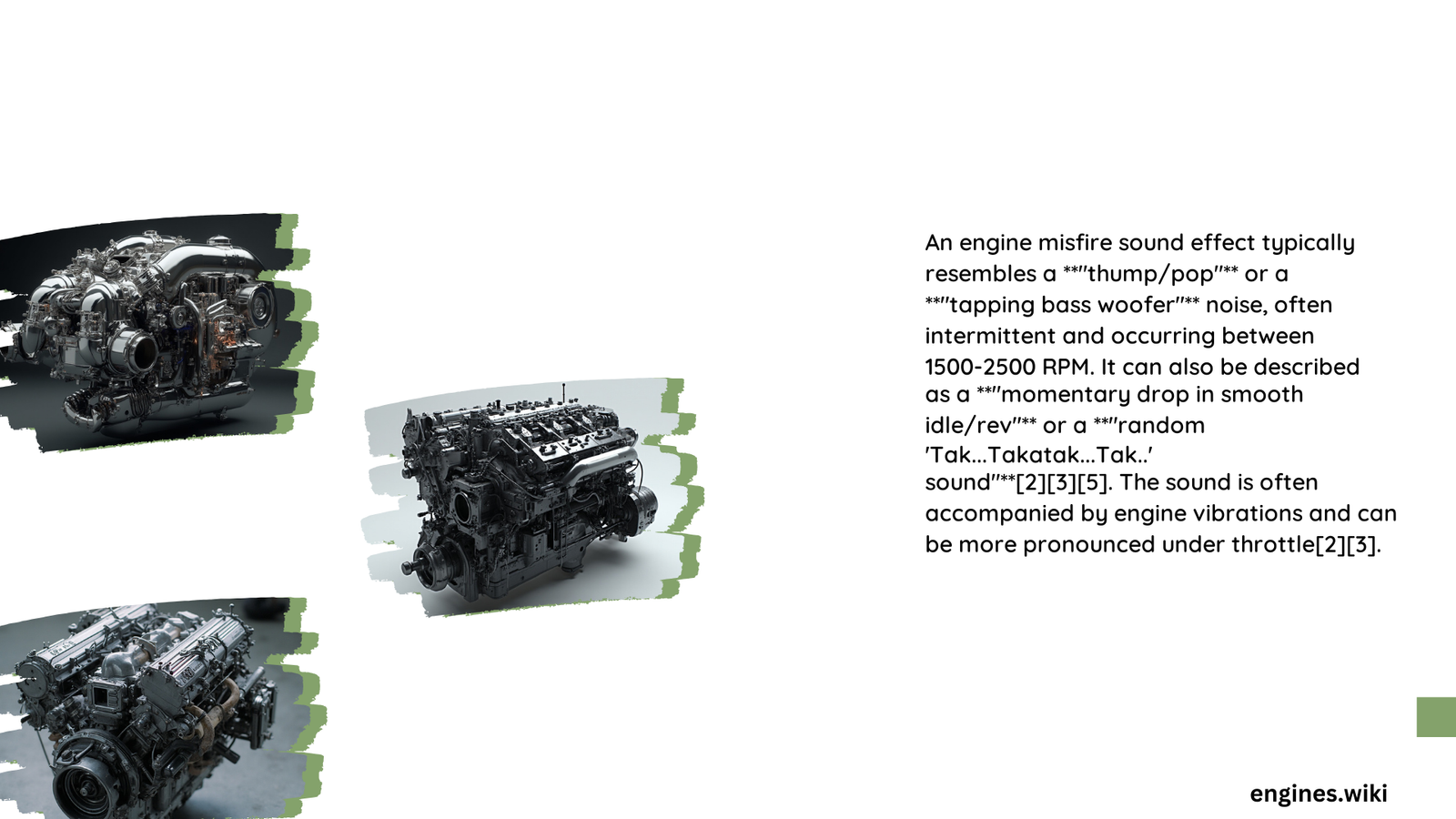Engine Misfire Sound Effect: A Comprehensive Technical Analysis
Quick Overview of Engine Misfire Sound Characteristics
Engine misfires represent complex acoustic phenomena where combustion irregularities produce distinctive sound signatures. These auditory indicators manifest through subtle yet critical frequency changes, revealing potential mechanical disruptions within an internal combustion engine’s intricate operational framework.
What Causes Unusual Engine Sounds?
Mechanical Origins of Misfire Sounds
- Spark Plug Degradation
- Worn electrodes create inconsistent electrical discharge
- Produces irregular combustion patterns
-
Generates distinctive “stuttering” sound effect
-
Fuel System Complications
- Clogged injectors reduce fuel delivery precision
- Creates uneven combustion rhythm
- Results in intermittent engine performance
Frequency and Amplitude Analysis
| Sound Characteristic | Frequency Range | Typical Decibel Level |
|---|---|---|
| Low-Intensity Misfire | 0-500 Hz | 65-75 dB |
| Moderate Misfire | 500-1500 Hz | 75-85 dB |
| Severe Misfire | 1500-2000 Hz | 85-95 dB |
How to Identify Misfire Sounds?
Auditory Diagnostic Techniques
- Listen during idle conditions
- Pay attention to acceleration responsiveness
- Note rhythmic irregularities
- Observe sudden power loss
Technical Diagnostic Approaches
Sound Measurement Tools
- Precision sound level meters
- Oscilloscope waveform analyzers
- Acoustic frequency spectrum analyzers
What Are Potential Repair Strategies?
Cost-Effective Solutions
- Spark plug replacement ($10-$50)
- Ignition coil inspection ($50-$200)
- Fuel injector cleaning ($50-$150)
- Comprehensive engine diagnostic scan ($80-$150)
Expert Recommendations
Preventive Maintenance Checklist
- Regular spark plug inspection
- Consistent fuel system maintenance
- Timely diagnostic scanning
- Professional annual engine evaluation
Critical Warning Signs
When to Seek Immediate Professional Help
- Persistent misfire sounds
- Significant power reduction
- Check engine light activation
- Unusual vibration patterns
Technical Performance Impact
Potential Consequences of Ignored Misfires
- Reduced fuel efficiency
- Increased emissions
- Potential catalytic converter damage
- Engine performance degradation
Precision Diagnostic Flowchart
[Misfire Sound Detected]
│
├── Low-Intensity Symptoms
│ ├── Spark Plug Inspection
│ └── Minor Adjustments
│
├── Moderate Symptoms
│ ├── Fuel System Analysis
│ └── Component Replacement
│
└── Severe Symptoms
├── Comprehensive Engine Diagnostic
└── Professional Intervention
Conclusion
Understanding engine misfire sound effects requires systematic observation, technical knowledge, and proactive maintenance strategies. Vehicle owners must remain vigilant about subtle acoustic changes indicating potential mechanical issues.

